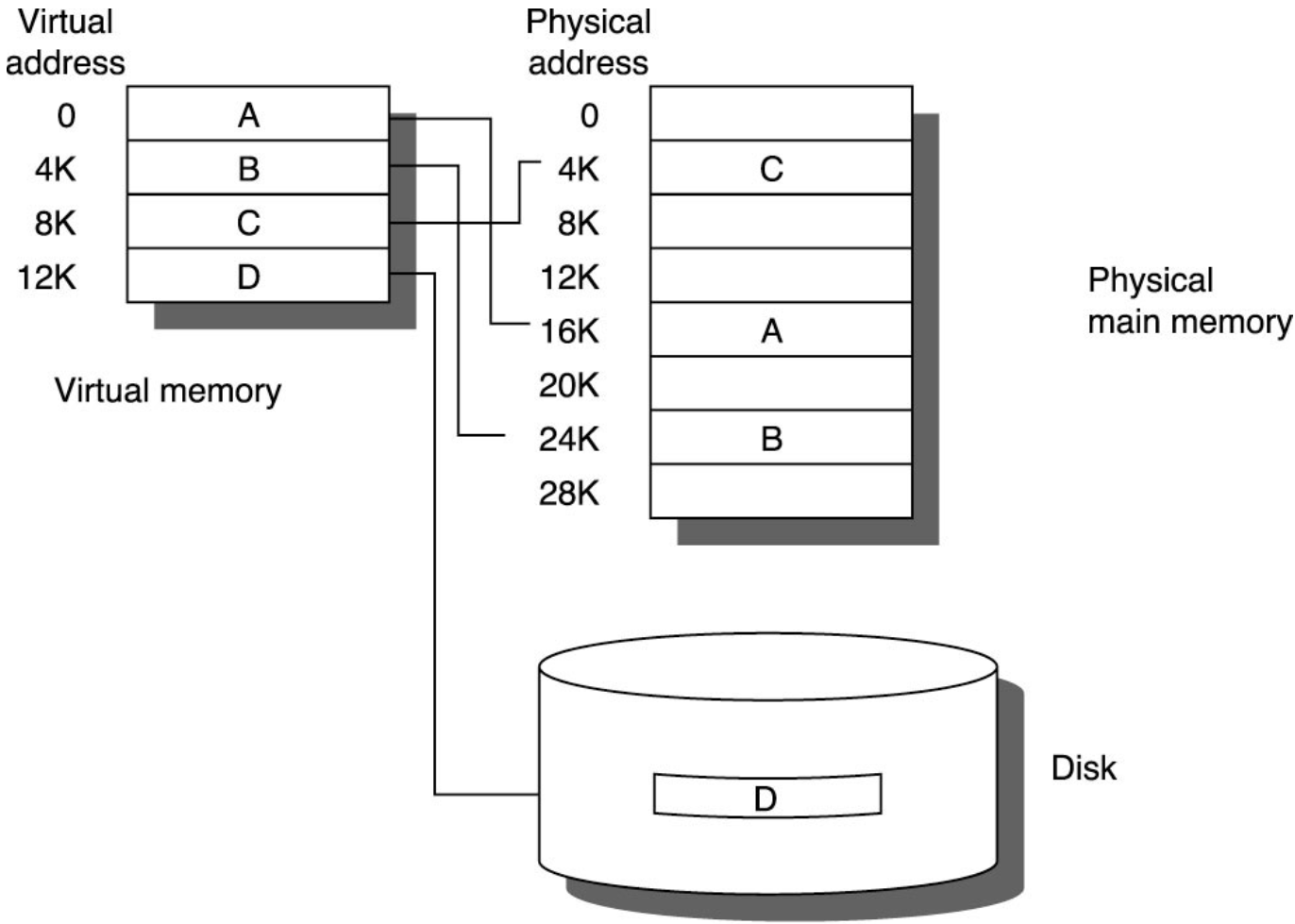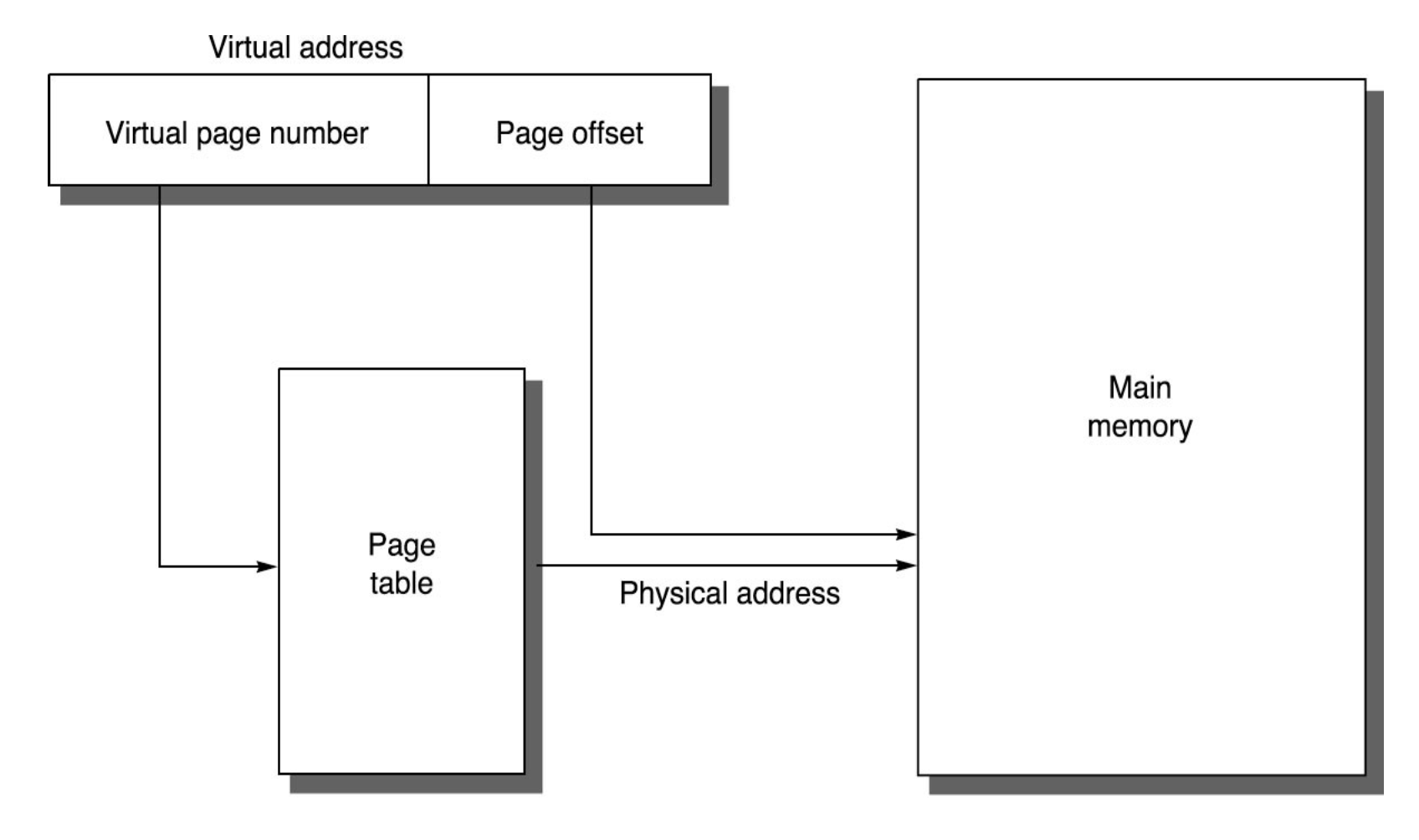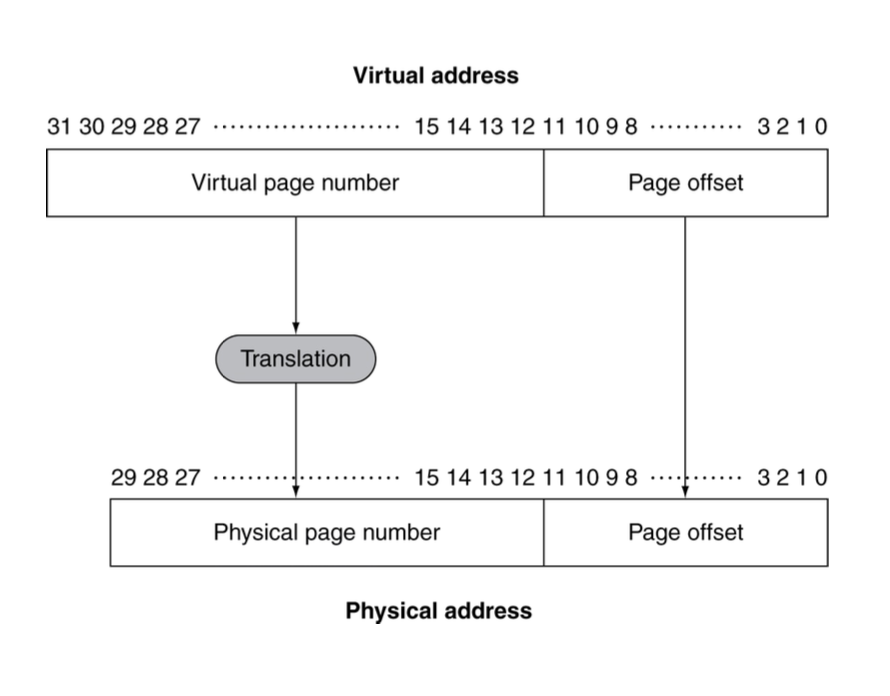Virtual Memory
- CPU and OS translate virtual addresses to physical addresses
- Initially designed so you don’t need to store your program and data separately
- Now it is used for protection
- Allows the OS to check that you have access to the certain physical address
- For each address check base ⇐ address ⇐ bound

Four Important Questions
- Where to place a block in main memory?
- Operating system takes care of it
- Replacement takes very long because it is fully associative
- How to find a block in main memory?
- Page table is used
- Offset is concatenated when paging is used
- Offset is added when segmentation is used
- Which block to replace when needed?
- LRU is used to minimize page faults
- What happens on write?
- Always write back (use of dirty bit)
- Because magnetic disks takes millions of cycles to access
Fast Address Calculation
- Page tables are very large
- Kept in main memory
- Remember the last translation
- Reuse if the address is on the same page
- Exploit the principle of locality
- If access have locality, the address translations also have locality
- Keep the address translations in a cache
- Translation lookaside buffer (TLB)
- The tag part stores the virtual address and the data part stores the page number.
Addressing
- We will cover paging
- Intel uses segmenting for backwards compatibility

- Intel uses segmenting for backwards compatibility
- We have a table that translates between the virtual address and the paged address
- This table grows as needed, because the whole table would be petabytes
- It is also stored across levels of caches
- Translation lookaside buffer
- Along with the optimizations
- Store the virtual address implicitly using index
- Use inverted table (physical to virtual) because there are less physical addresses
- This table grows as needed, because the whole table would be petabytes
- While each process feels like it has access to all the memory, it is expected for them to not abuse that
